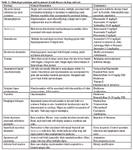Nail disease (Proceedings)
Diseases primarily affecting the nails and nail folds are relatively uncommon in dogs and cats.
Diseases primarily affecting the nails and nail folds are relatively uncommon in dogs and cats. When they do occur, they often present a diagnostic and therapeutic challenge. Diseases of the nails and nail folds are often painful and demand aggressive intervention. Replacing a diseased nail with a normal one takes several months under the best of circumstances.
There is a long list of terms which refer to various aspects of nail disease. Some of the more pertinent definitions are: onychia (inflammation of the nail unit), onychodystrophy (abnormal nail formation), onychogryposis (hypertrophy and curvature), onycholysis (separation of the nail from underlying structures), onychomadesis (sloughing of nails), onychomalacia (softening of nails), onychomycosis (fungal infection of nails), and paronychia (inflammation of the nail fold).
The initial assessment of a patient with nail disease should consider whether the condition affects single or multiple nails, as well as single or multiple paws. Etiologies more often resulting in single nail or single paw involvement include trauma, infections (bacterial or fungal), parasites (demodicosis or hookworm dermatitis) and neoplasia originating from the nail structure. Those conditions more often associated with multiple paw and nail involvement include immune-mediated diseases, metabolic diseases, and metastatic neoplasia. When trauma of a single nail is suspected, the remaining nails should be closely examined. The traumatic avulsion of a diseased nail may be the first overt sign of more widespread disease.
The diagnostic methods most appropriate to the work-up of nail diseases include cytology, skin scraping, fungal culture, bacterial culture, biopsy, and radiography. Other testing (e.g. ANA, serum chemistry panel, and urinalysis) may be warranted depending upon your list of differential diagnoses. Cytological and bacterial culture samples should be taken from the nail fold. Extending the claws of a cat with paronychia improves visualization and access to this area. Fungal cultures, while often unfruitful, are an important aspect of a complete work-up. Nail clippings and proximal shavings are diced and placed in Dermatophyte Test Media or submitted to a reference laboratory. Skin scrapings of adjacent skin are safely taken with a stainless steel spatula or the reverse edge of a scalpel blade. In addition, you may examine plucked hair (trichogram) for Demodex mites in regions that are difficult to scrape. Diagnostic biopsy samples are best obtained by amputation of P3. Thus, an affected dew claw is the best choice, when available. A punch biopsy technique for sampling canine nail beds has also been described, but may not produce diagnostic samples.
A multitude of diseases are associated with nail pathology. Some of these diseases, their clinical aspects, and treatment recommendations are shown in Table 1.

Table 1: Clinical presentation and treatment of nail diseases in dogs and cats
Further Reading
Foster, Foil. BSAVA Manual of Small Animal Dermatology, 2nd ed., BSAVA, 2003.
Medleau, Hnilica. Small Animal Dermatology: A Color Atlas and Therapeutic Guide, 2nd ed., Saunders-Elsevier, 2006.